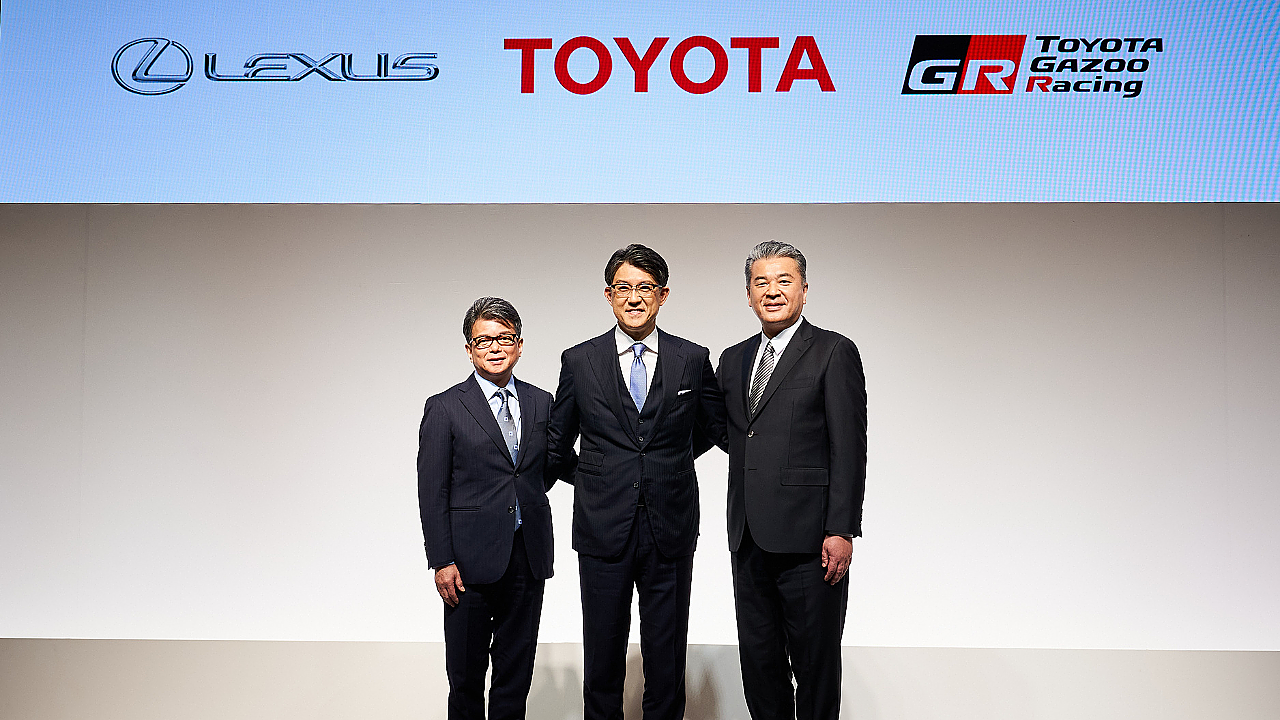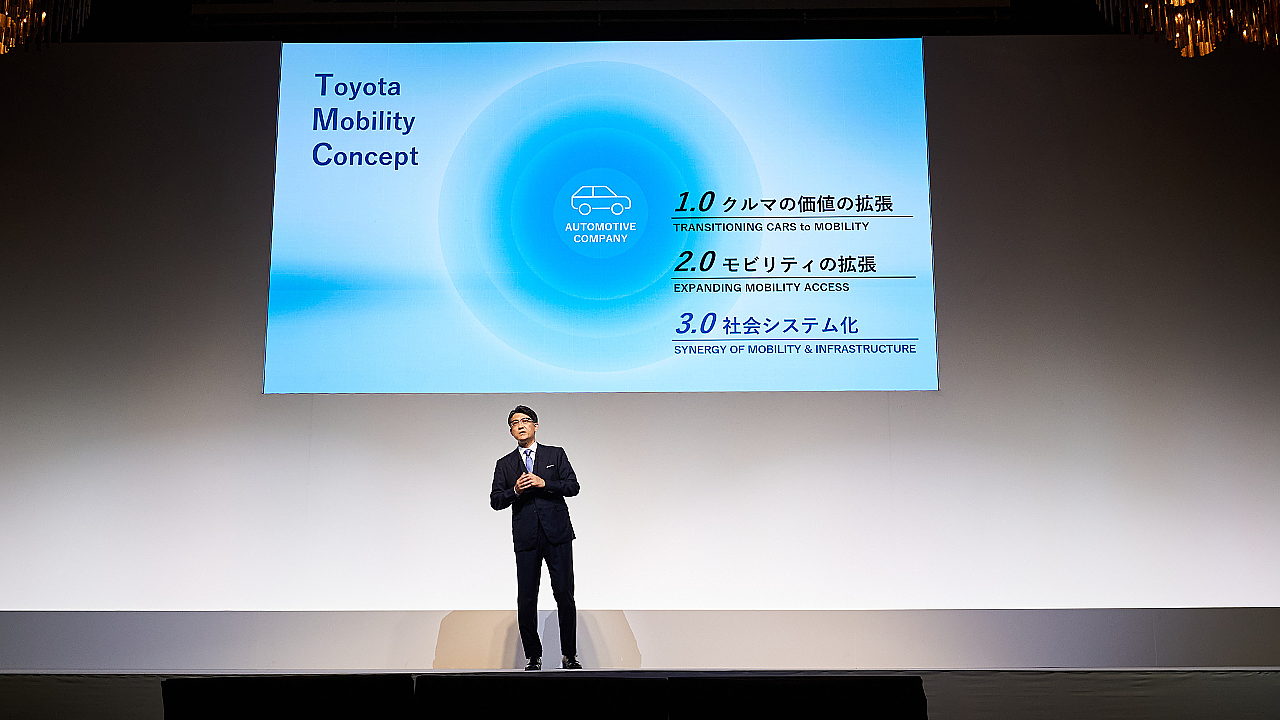
Koji Sato, the new President & CEO of Toyota Motor Corporation, reiterated at a recent meeting in Japan that the automaker was “fully committed” to achieving carbon neutrality in 2050.
“When it comes to car manufacturing, we will continue to pursue a variety of options, based on multi-pathway solutions, to stay close to the future of energy and the condition of each region,” he elaborated at this event which showcased the new management policy and direction.
Toyota, continued Sato, would “thoroughly implement” and promote the “practical popularisation” of electrified vehicles. The company would also strengthen sales of hybrid electric vehicles, including in emerging markets, and increase the number of plug-in hybrid electric vehicle options.
“We will expand our line-up of battery electric vehicles, or BEVs, which represent one important option, over the next several years,” he said. At the same time, Toyota was “boldly preparing” itself for the future and this would see developing next-generation BEVs and create new business models.
Focus On Hydrogen
The company would also accelerate projects for the realisation of the “hydrogen society that lies just beyond”. With partners across industries and countries, Toyota would advance the expansion of using hydrogen, mass production of commercial fuel cell electric vehicles, and development of hydrogen engine technologies in the arena of motorsports.
“We will work to promote electrified vehicles and reduce CO2 emissions while leaving no one behind, including in emerging markets,” said Sato. Through this “all-direction” approach, the company hoped to reduce average CO2 emissions for vehicles sold worldwide by 33% by 2030 and by over 50% by 2035.
Another theme that would change the future of cars lay in “expanding the value of mobility”. The cars of the future, he added, would become more connected to society as they become more electrified, intelligent and diversified.
Three Mobility Domains
From Sato’s point of view, Toyota would continue its transformation into a mobility company in three domains. The first is “Mobility 1.0”, where the idea is to extend the value of the car by “connecting various types of movement”. For instance, BEVs offer new possibilities as mobility that transports electricity.
“Collectively serving as an energy grid, BEVs can enhance the energy security of society. That’s the kind of role that BEVs can also fulfil. Also, intelligence can evolve cars even further by using information gathered from cars and customers,” explained the Toyota President.
This is where the company’s software platform, Arene, would play a role in this new kind of car-making. Connecting the latest hardware and software would enable cars and various software applications to freely connect. “Arene will fulfil an important role as a platform to support this kind of evolution,” he said.
As for the second domain, “Mobility 2.0”, the goal is to expand mobility into new realms. As Sato explained, there are many people for whom “we are not able to support mobility”, such as the elderly or those living in depopulated areas, as well as people in emerging regions where the car market has yet to mature.
“New mobility possibilities, such as mobility in the sky, are also expanding. Toyota, in addition to having a full line-up of vehicles, has a network of colleagues across industries, including in new forms of mobility,” he said. Leveraging these strengths would help provide greater mobility support to customers worldwide.
Finally, “Mobility 3.0” is about integration with social systems. “Creating mobility ecosystems that tie into energy and transportation systems, logistics, as well as the way we live, and are integrated with cities and society,” explained Sato.

Working Beyond Silos
The most important message he sought to convey is that mobility lies beyond the future of the car. “Cars lie at the centre of our transformation into a mobility company. We will change the future of cars based on our products and regions,” he continued.
Sato added that he was determined to focus on team management since car-making is a team effort. “Together with the 370,000 Toyota associates around the world, our suppliers, and our dealers, we all make cars together. I would like to put into practice management that leverages the team power of such a carmaker,” he said.
This outlook stems from the fact that Toyota has many management members who share the same values but are still “highly individualistic”. In times of rapid environmental change, “we must play with our roles, not titles, to move across functions”, thereby increasing the volume of what we put into practice many times faster.
“That is why, under the new management structure, we will accelerate the taking on of challenges for the future, with a new management style of simultaneously and organically working as a team,” signed off Sato.
Electrification Priorities
Hiroki Nakajima, Executive Vice President, said Toyota would continue to “tailor electrification to the needs of customers and individual regions” by drawing on the strengths and characteristics of each vehicle type.
This would see it expanding its current line-up of BEVs by releasing ten new models by 2026, translating into 1.5 million vehicles annually. “We also have plans to release next-generation BEVs entirely different from those of today. These will double driving range by using batteries with far greater efficiency,” he said.
Nakajama added that plans were also underway to transform manufacturing where, drawing on the strengths of the Toyota Production System, the number of processes would be reduced by half. This would mean a shift to more efficient lines, including autonomous inspections and unmanned transport powered by connected technology.
Toyota also planned to overhaul existing supply chains by working with vendors to procure superior quality parts at lower prices. To realise these transformations, the company is creating a new specialised unit. “Working under a single leader entrusted with full authority, this all-in-one team will handle every function, from development to production and business operation,” explained Nakajama.
Other Clean Options
Plug-in hybrids were as important and by increasing battery efficiency to extend the EV-mode driving range beyond 200 km, Toyota would reposition them as “the practical BEV”.
In full cell EVs, the company would pursue mass production centred on commercial vehicles and, more specifically, medium/ heavy-duty trucks. For hybrid EVs, the focus would be on high quality and affordable prices.
Interestingly, Nakajama made a reference to energy diversification and spoke of using hydrogen made from water, food loss and other waste, as well as carbon-neutral fuels made from biomass. Some demonstrations have already taken place in Japan and Thailand. “This energy will also be trained in the field of motorsports with an aim to promote widespread adoption in society,” he said.

Region-Specific Initiatives
Yoichi Miyazaki, Executive Vice President, spoke on region-specific initiatives and the Toyota New Global Architecture or TNGA, which had helped boost sales in emerging markets and also achieve an “exceptionally balanced” regional sales mix.
“We will continue to deepen our region-centred management and further solidify the business foundation. To do so, the first thing that we must address is how to achieve carbon neutrality. Carbon knows no borders, and CO2 reduction is an issue that cannot wait,” he said.
In Asia and other emerging markets, Toyota would ensure that it would respond to the growing demand for BEVs. Specifically, by the end of the year, it would start local production of BEV pickup trucks and also launch a small battery EV model.
For growth in emerging markets, continued Miyazaki, profitable hybrids would be used as a source of income, and with a value chain of 10 million units, “we will also take in a wide range of business opportunities”. In addition, the company is committed to cost reduction by leveraging the strengths of TPS and Kaizen to the fullest extent.
“As a result, we will further create a future investment capacity for the expansion of battery EV growth in mobility areas and establish a strong business foundation, whereby carbon neutrality and growth can both be achieved,” he said.
Also Read